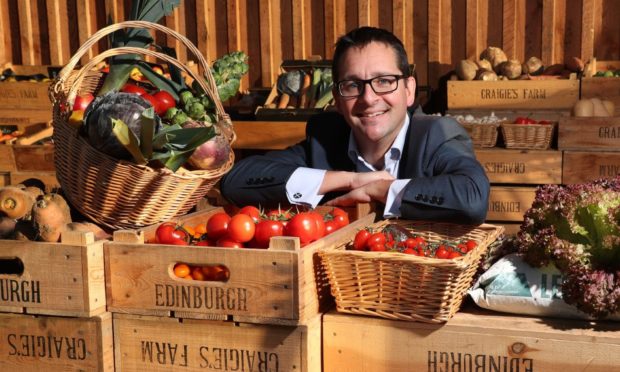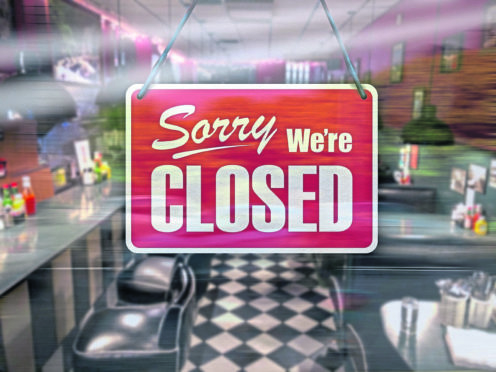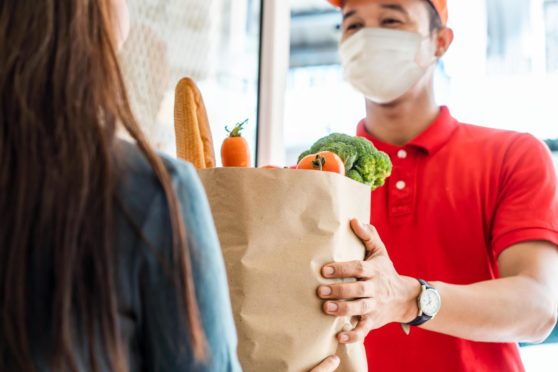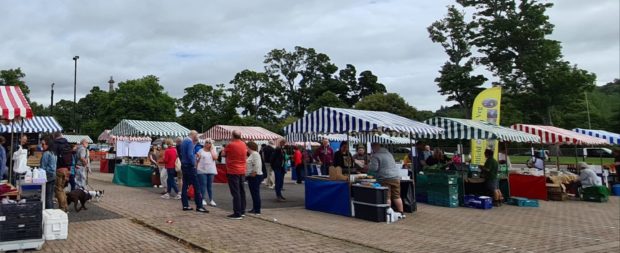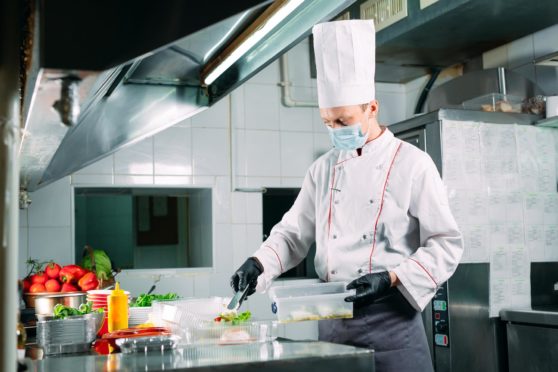Brian Stormont spoke to James Withers, chief executive of Scotland Food and Drink, to get his thoughts on how the last year during a pandemic has affected the sector.
There can be absolutely no denying that the coronavirus pandemic has had an enormous impact on the food and drink sector.
Some businesses and enterprises have suffered irreparable damage, while others – the lucky ones – have thrived as the Covid-19 outbreak has provided them with fresh opportunities or has forced them to diversify, which has resulted in amazing results.
The other thing that is also certain is that a huge number of food and drink businesses, if they have been fortunate enough to survive, still have to fight more battles as we emerge from lockdown.
James Withers, chief executive of Scotland Food and Drink, is certainly well placed to look back on a year of Covid-19.
And he believes the growth the country had seen in its food and drink industry has probably gone back three years.
However, James also sees many reasons for optimism with consumers and tourists having a key role to play in the recovery which begins now.
“I think when we went into lockdown for food and drink businesses. We were seeing panic buying, we were seeing workforces that were frightened, we were seeing a debate about whether continuous food and drink production was an essential activity,” he said.
“Had we known a year ago we would still be here I’m not sure many would have mustered the motivation to work through it all. As it is, it has been a kind of week by week battle for survival for many businesses and that struggle isn’t over.
Financial hit
“I think the impact of the pandemic is going to cast a shadow for years now and many businesses are going to emerge incredibly fragile and with a lot of the characteristics as new-start businesses rather than businesses that have been going for generations due to the financial hit that has been taken.”
However, many enterprises have shown over the last 12 months that they were up for the fight, something that did not surprise James at all.
“Businesses have shown a great amount of resilience and they deserve an enormous amount of credit for that, but that’s not new for the food and drink industry.
“No matter what is happening in the world from global pandemics to world wars we need to keep eating. We need to keep cupboards stocked and fridges full so, despite all the turmoil for businesses and their staff, and many businesses having to reinvent how they work, they have done that successfully, which is an incredible testament to their resilience coming through the pandemic.
“The next test of their resilience is coming through the pandemic and now having to deal with Brexit, the biggest trade disruption of a lifetime, to try and get back on to an even keel.”
Food production at all levels has provided a huge lifeline for many people, but with a huge number of businesses being closed for long periods the road to recovery for them is a long one.
“I think there was initially quite a bit of confusion and even some debate about whether food production was an essential activity. I don’t think anyone would debate that anymore so I think we are much better at understanding how critical some of our national infrastructures are,” continued James.
Weathered a storm
“For a lot of businesses as well, they are thinking hard about their own resilience. For the businesses that have a good spread of markets between local and international, between selling into supermarkets and selling into hotel chains, I think those businesses that are able to diversify more probably weathered the storm a little better. Those who have been supplying the retailers have actually done OK, but I think going forward that need to diversify and manage risk is going to be really critical.
“But a lot of businesses have put in contingency plans that will actually serve them really well in future years.
“Whether that’s around dealing with staff absences or dealing with interruptions to the supply chain. So in a sense, some businesses from a preparedness point of view will emerge from the pandemic in a better place than they went into it.”
“Support for businesses as they emerge from the pandemic is going to be absolutely top priority.”
Recovery plan
And to that end, Scotland Food and Drink is at the forefront, partnering with government and industry partners to help with recovery plans.
“A lot of the government support was critical particularly at the start of it all a year ago, not only furlough which has carried on, but some good grant support schemes from the Scottish Government. Gradually they have faded away and whilst if you are a shop that has had to close, a bar that has had to close or a restaurant that has had to close, there has been direct support there,” he said.
“There has been much less support for people in that supply chain. For food and drink producers who supplied the hotel and restaurants, they are in a really precarious position and how we support them coming out of the pandemic is going to be critical.
“The Scottish Government has agreed with us and our partners in the industry on a recovery plan for the sector. We think Covid has probably set us back two or three years when you consider the growth trajectory we were on.
“We have a recovery plan in place that will be about trying to sell more locally within Scotland and celebrate what we have on our doorstep. There is a big bit consumers and shoppers can do out there by buying and shopping local and supporting the businesses that are there in their communities.
Crucial announcement today from @NicolaSturgeon at #STAConf of £25M to support Scottish tourism’s recovery post-Covid. Alongside funding already agreed for food & drink industry recovery plan, these are two sectors that can drive the recovery in Scotland’s economy & communities pic.twitter.com/kEWHtuphej
— James Withers (@scotfoodjames) March 24, 2021
“Meanwhile, we will be delivering a lot of activity to try and regain some of lost ground in export markets and in the rest of the UK as well.
“There is a huge amount to be done but I am optimistic that despite the dreadful 12 months that it has been, that actually, fundamentally, the Scottish food and drink industry has the right products at the right time and we just need to work hard to get back on our feet.”
Could you help lead and inspire local food tourism growth and raise Scotland's profile as a food tourism destination?
Today, with @st_alliance & supported by @scotgov, we launched a new initiative to find Regional Food Tourism Ambassadors across Scotlandhttps://t.co/HLyHDQMaW7 pic.twitter.com/gEZA6x10u8
— scotfooddrink (@scotfooddrink) March 22, 2021
Growth opportunities
Food tourism is big business for Scotland and particularly in our circulation area’s communities. James sees massive opportunities for growth in that area as we come out of the pandemic.
“That’s where there is a real opportunity. We have done consumer research and there have been changes in shopping habits during the pandemic with a lot more people shopping online, but more than that people are actually being more interested than ever looking at businesses in their area and trying to support them,” he added.
“People have missed out on that experience of eating out. My hope is, and I think there will be opportunities, that when our tourist industry re-emerges from its hibernation that actually our food and drink element of that will be stronger than ever.
“We are working really hard with Scottish Tourism Alliance to make that happen. Food tourism was the fastest-growing part of the tourism industry before the pandemic hit and there is no reason to think that won’t happen again.”
Well placed
With 12 months of stop-start closures due to the virus outbreak hopefully now behind us, what could the next 12 months hold for a sector battered by a global pandemic?
James believes that Scotland is well placed to emerge stronger after the pandemic.
“There will be a new normal, that’s for sure. The billions more being spent online and e-commerce is not going to go back to the way it was before Covid so businesses are having to think really hard about how they sell themselves online as well as on a restaurant menu or on the supermarket shelf,” he said.
“There will be this great food tourism opportunity in Scotland and we will see a staycation boom hopefully from the summer onwards in Scotland.
“While our trade to Europe has become horrendously more complex and costly, there do remain real opportunities beyond Europe so we shouldn’t certainly talk ourselves out of the opportunity to go global.
“If Covid hadn’t happened last year the defining story of the year would have been climate change, Cop26, Australian bushfires, that whole climate change piece is coming back.
“Scotland’s opportunity within that sustainable food production world is huge and that is going to be a big focus once we get through the pandemic and get back on our feet.”
